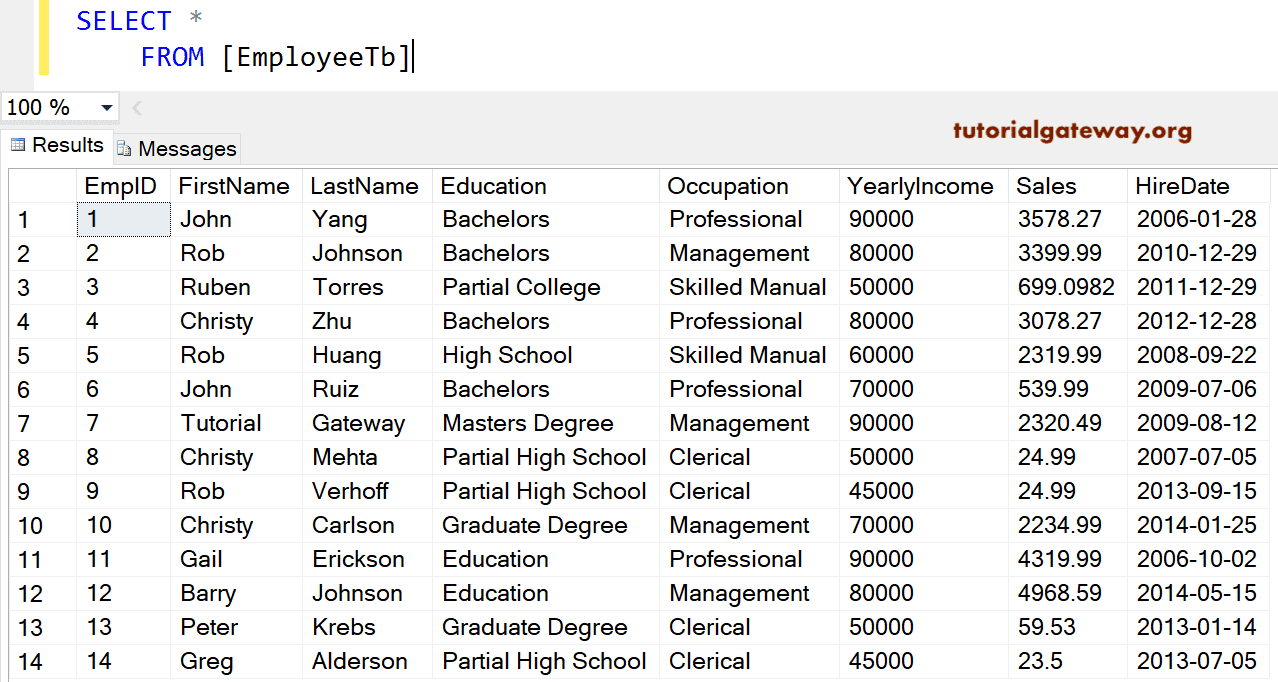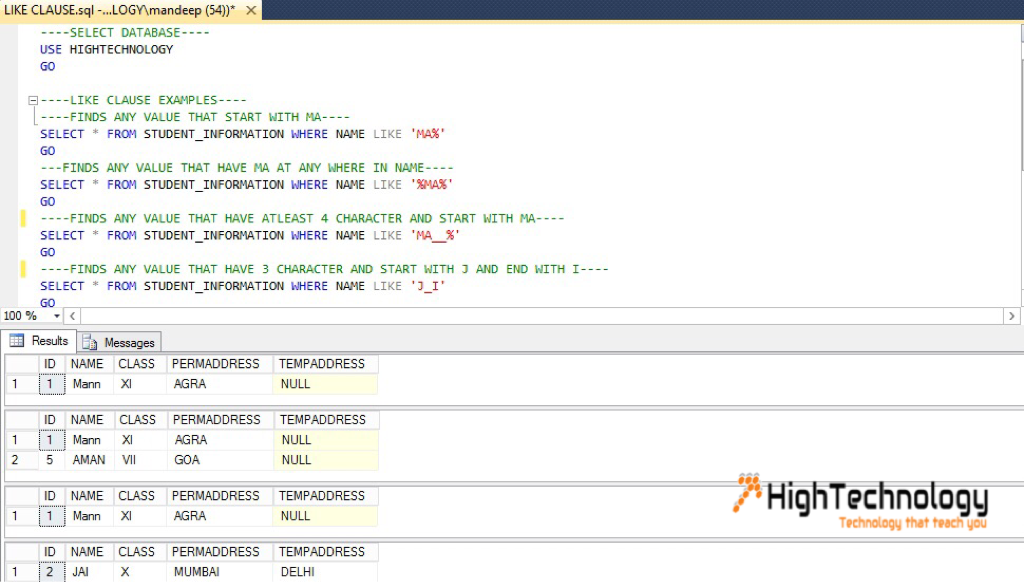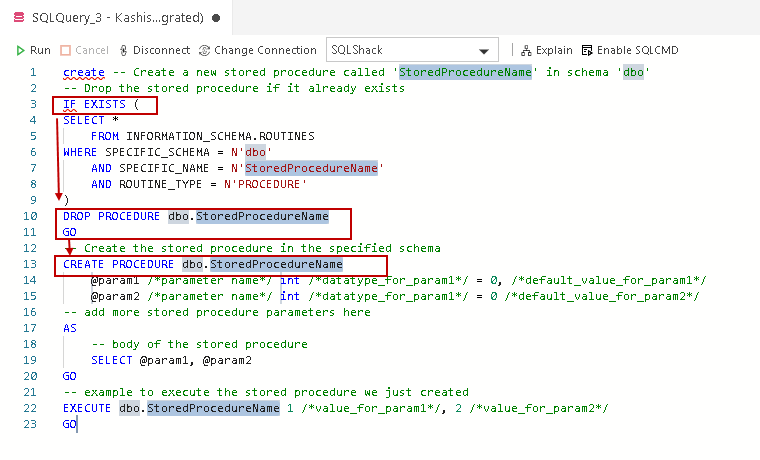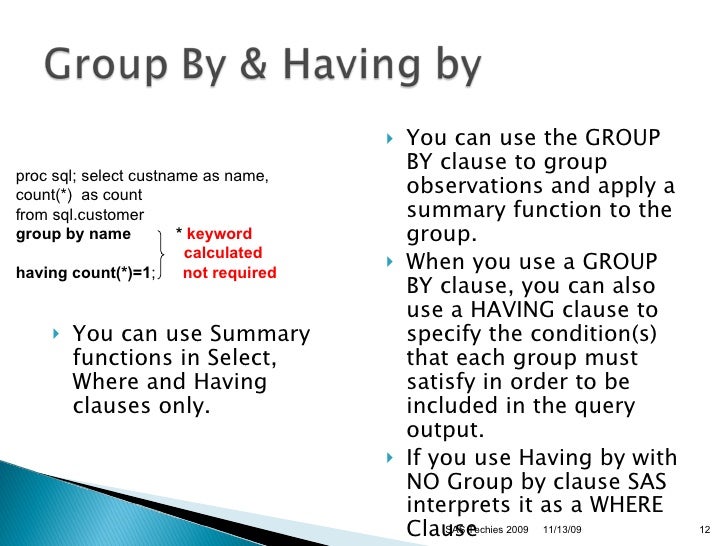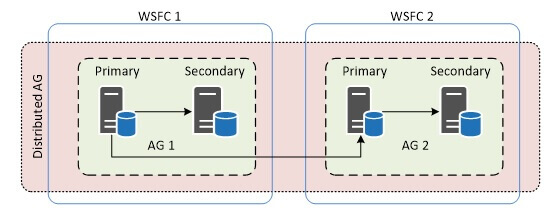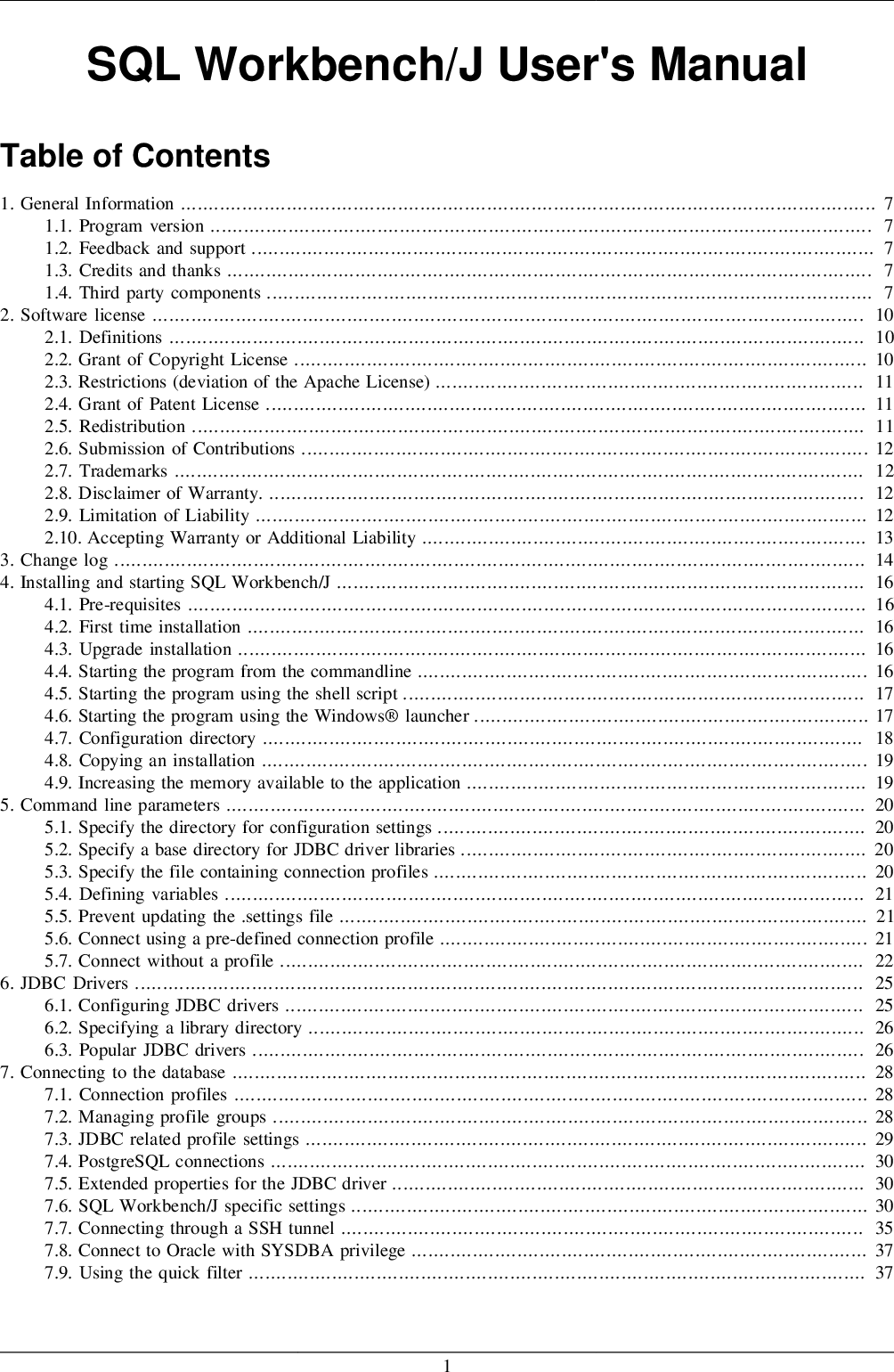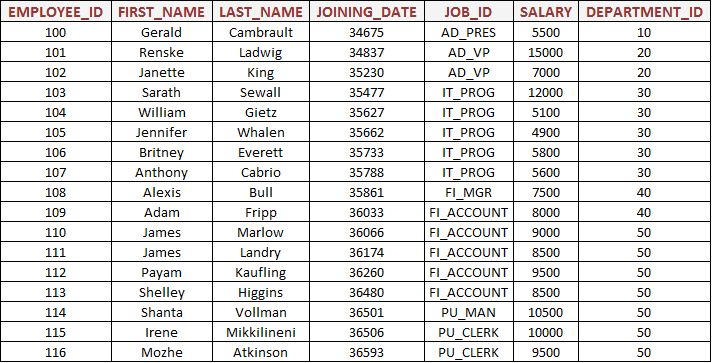At a high level, the process of aggregating data can be described as applying a function to a number of rows to create a smaller subset of rows. In practice, this often looks like a calculation of the total count of the number of rows in a dataset, or a calculation of the sum of all of the rows in a particular column. For a more comprehensive explanation of the basics of SQL aggregate functions, check out the aggregate functions module in Mode's SQL School. Once the rows are divided into groups, the aggregate functions are applied in order to return just one value per group. It is better to identify each summary row by including the GROUP BY clause in the query resulst.
All columns other than those listed in the GROUP BY clause must have an aggregate function applied to them. The GROUP BY clause is often used in SQL statements which retrieve numerical data. It is commonly used with SQL functions like COUNT, SUM, AVG, MAX and MIN and is used mainly to aggregate data. Data aggregation allows values from multiple rows to be grouped together to form a single row. The first table shows the marks scored by two students in a number of different subjects.
The second table shows the average marks of each student. There are times when you want to have SQL Server return an aggregated result set, instead of a detailed result set. SQL Server has the GROUP BY clause that provides you a way to aggregate your SQL Server data. The GROUP BY clause allows you to group data on a single column, multiple columns, or even expressions. In this article I will be discussing how to use the GROUP by clause to summarize your data. The OVER clause defines a window or user-specified set of rows within a query result set.
A window function then computes a value for each row in the window. You can use the OVER clause with functions to compute aggregated values such as moving averages, cumulative aggregates, running totals, or a top N per group results. You can use the SQL PARTITION BY clause with the OVER clause to specify the column on which we need to perform aggregation. PARTITION BY gives aggregated columns with each record in the specified table.
If we have 15 records in the table, the query output SQL PARTITION BY also gets 15 rows. On the other hand, GROUP BY gives one row per group in result set. ROLLUP is an extension of the GROUP BY clause that creates a group for each of the column expressions. Additionally, it "rolls up" those results in subtotals followed by a grand total. Under the hood, the ROLLUP function moves from right to left decreasing the number of column expressions that it creates groups and aggregations on.
Since the column order affects the ROLLUP output, it can also affect the number of rows returned in the result set. The GROUP BY clause is a SQL command that is used to group rows that have the same values. Optionally it is used in conjunction with aggregate functions to produce summary reports from the database.
You cannot test them as NULL values in join conditions or the WHERE clause to determine which rows to select. For example, you cannot add WHERE product IS NULL to the query to eliminate from the output all but the super-aggregate rows. The Group by clause is often used to arrange identical duplicate data into groups with a select statement to group the result-set by one or more columns. This clause works with the select specific list of items, and we can use HAVING, and ORDER BY clauses. Group by clause always works with an aggregate function like MAX, MIN, SUM, AVG, COUNT.
You must use the aggregate functions such as COUNT(), MAX(), MIN(), SUM(), AVG(), etc., in the SELECT query. The result of the GROUP BY clause returns a single row for each value of the GROUP BY column. The Group by Clause in SQL Server is used to divide similar types of records or data as a group and then return.
What Is The Group By Clause In SQL If we use group by clause in the query then we should use grouping/aggregate function such as count(), sum(), max(), min(), and avg() functions. The GROUP BY clause is often used with aggregate functions such as AVG(), COUNT(), MAX(), MIN() and SUM(). In this case, the aggregate function returns the summary information per group. For example, given groups of products in several categories, the AVG() function returns the average price of products in each category. The GROUP BY clause divides the rows returned from the SELECTstatement into groups. For each group, you can apply an aggregate function e.g.,SUM() to calculate the sum of items or COUNT()to get the number of items in the groups.
FILTER is a modifier used on an aggregate function to limit the values used in an aggregation. All the columns in the select statement that aren't aggregated should be specified in a GROUP BY clause in the query. Following each set of rows for a given year, an extra super-aggregate summary row appears showing the total for all countries and products.
These rows have the country and productscolumns set to NULL. Optionally it is used in conjunction with aggregate functions to produce the resulting group of rows from the database. When you start learning SQL, you quickly come across the GROUP BY clause. Data grouping—or data aggregation—is an important concept in the world of databases.
In this article, we'll demonstrate how you can use the GROUP BY clause in practice. We've gathered five GROUP BY examples, from easier to more complex ones so you can see data grouping in a real-life scenario. As a bonus, you'll also learn a bit about aggregate functions and the HAVING clause. The MIN and MAX functions are used to find the minimum and maximum values of fields.
When used together with the GROUP BY clause, the MIN and MAX functions will compute the minimum and maximum values for the fields selected for aggregation. The above query includes the GROUP BY DeptId clause, so you can include only DeptId in the SELECT clause. You need to use aggregate functions to include other columns in the SELECT clause, so COUNT is included because we want to count the number of employees in the same DeptId. Finally, following all other rows, an extra super-aggregate summary row appears showing the grand total for all years, countries, and products. This row has the year, country, and products columns set to NULL.
This statement is used to group records having the same values. The GROUP BY statement is often used with the aggregate functions to group the results by one or more columns. Aggregate functions are functions that take a set of rows as input and return a single value.
In SQL we have five aggregate functions which are also called multirow functions as follows. Like most things in SQL/T-SQL, you can always pull your data from multiple tables. Performing this task while including a GROUP BY clause is no different than any other SELECT statement with a GROUP BY clause. The fact that you're pulling the data from two or more tables has no bearing on how this works. In the sample below, we will be working in the AdventureWorks2014 once again as we join the "Person.Address" table with the "Person.BusinessEntityAddress" table. I have also restricted the sample code to return only the top 10 results for clarity sake in the result set.
Expression_n The expressions that are not encapsulated within an aggregate function and must be included in the GROUP BY clause. Aggregate_function It can be a function such as SUM, COUNT, MIN, MAX, or AVG functions. Tables The tables that you wish to retrieve records from. There must be at least one table listed in the FROM clause. The conditions that must be met for the records to be selected. The GROUP BY clause is used in a SELECT statement to group rows into a set of summary rows by values of columns or expressions.
There is no doubt that SQL is an essential skill and every programmer, developer, DevOps, and Business analyst should know SQL. If you want to learn SQL from scratch then you have come to the right place. Earlier, I have shared many SQL interview questions and thebest SQL courses for beginners, and today, I am going to share some GROPU By examples in SQL to write aggregation queries. THE GROUP BY clause in SQL is another important command to master for any programmer. Following each set of product rows for a given year and country, an extra super-aggregate summary row appears showing the total for all products. Sub-total rows are rows that further aggregate whose values are derived by computing the same aggregate functions that were used to produce the grouped rows.
Here, you can add the aggregate functions before the column names, and also a HAVING clause at the end of the statement to mention a condition. What if we want to filter the values returned from this query strictly to start station and end station combinations with more than 1,000 trips? Since the SQL where clause only supports filtering records and not results of aggregation functions, we'll need to find another way. The Group By statement is used to group together any rows of a column with the same value stored in them, based on a function specified in the statement.
Generally, these functions are one of the aggregate functions such as MAX() and SUM(). SQL allows the user to store more than 30 types of data in as many columns as required, so sometimes, it becomes difficult to find similar data in these columns. Group By in SQL helps us club together identical rows present in the columns of a table. This is an essential statement in SQL as it provides us with a neat dataset by letting us summarize important data like sales, cost, and salary. HAVING Clause is used as a conditional statement with GROUP BY Clause in SQL. WHERE Clause cannot be combined with aggregate results so Having clause is used which returns rows where aggregate function results matched with given conditions only.
Data Grouping and Data Aggregation are the important concepts of SQL. Note – There is a restriction regarding the use of columns in the GROUP BY clause. Each column appearing in the SELECT list of the query must also appear in the GROUP BY clause. This restriction does not apply to constants and to columns that are part of an aggregate function.
(Aggregate functions are explained in the next subsection.) This makes sense, because only columns in the GROUP BY clause are guaranteed to have a single value for each group. In this lesson, we will learn uses of the GROUP BY clause in SQL. GROUP BY is often used together with SQL aggregate functions like COUNT, SUM, AVG, MAX and MIN that act on numeric data. Together with these functions, the GROUP BY clause enhances the power of SQL and facilitates the creation of reports with summary data. Though it's not required by SQL, it is advisable to include all non-aggregated columns from your SELECT clause in your GROUP BY clause. A GROUP BY statement in SQL specifies that a SQL SELECT statement partitions result rows into groups, based on their values in one or several columns.
Typically, grouping is used to apply some sort of aggregate function for each group. This is because the where statement is evaluated before any aggregations take place. The alternate having is placed after the group by and allows you to filter the returned data by an aggregated column.
Use theSQL GROUP BYClause is to consolidate like values into a single row. The group by returns a single row from one or more within the query having the same column values. Its main purpose is this work alongside functions, such as SUM or COUNT, and provide a means to summarize values.
That means first Group By clause is used to divide similar types of data as a group and then an aggregate function is applied to each group to get the required results. Contrary to what most books and classes teach you, there are actually 9 aggregate functions, all of which can be used with a GROUP BY clause in your code. As we have seen in the samples above, you can have a GROUP BY clause without an aggregate function as well. As we demonstrated earlier in this article, the GROUP BY clause can group string values also, so it doesn't always have to be a numeric or date value.
Another extension, or sub-clause, of the GROUP BY clause is the CUBE. The CUBE generates multiple grouping sets on your specified columns and aggregates them. In short, it creates unique groups for all possible combinations of the columns you specify.
For example, if you use GROUP BY CUBE on of your table, SQL returns groups for all unique values , , and . The SUM() function returns the total value of all non-null values in a specified column. Since this is a mathematical process, it cannot be used on string values such as the CHAR, VARCHAR, and NVARCHAR data types. When used with a GROUP BY clause, the SUM() function will return the total for each category in the specified table. The SELECT statement used in the GROUP BY clause can only be used contain column names, aggregate functions, constants and expressions.
The GROUP BY statement is often used with aggregate functions (COUNT(),MAX(),MIN(), SUM(),AVG()) to group the result-set by one or more columns. Both of these clauses help a user in organizing the data that SQL queries obtain. Although they serve a similar kind of purpose, there is a significant difference between Order by and Group by clause in SQL. People generally use the GROUP BY clause when they need to aggregate the available functions to multiple sets of rows.
On the other hand, we use the ORDER BY clause when we need the available data in sorted order . It's recommended to use the SQL PARTITION BY clause while working with multiple data groups for the aggregated values in the individual group. Similarly, it can be used to view original rows with the additional column of aggregated values.
The HAVING keyword works exactly like the WHERE keyword, but uses aggregate functions instead of database fields to filter. This is your most expensive department in terms of salary. The GROUP BY clause permits a WITH ROLLUP modifier that causes summary output to include extra rows that represent higher-level (that is, super-aggregate) summary operations. ROLLUPthus enables you to answer questions at multiple levels of analysis with a single query. For example, ROLLUP can be used to provide support for OLAP operations. In addition to producing all the rows of a GROUP BY ROLLUP, GROUP BY CUBE adds all the "cross-tabulations" rows.
In my code here I first created and populated a table named NullGroupBy. The first and last rows have a value of NULL from the OrderDate, and the other two columns have different OrderDate values. As you can see by reviewing the output above, SQL Server rolls-up the two rows that contain a NULL OrderDate into a single summarized row.


